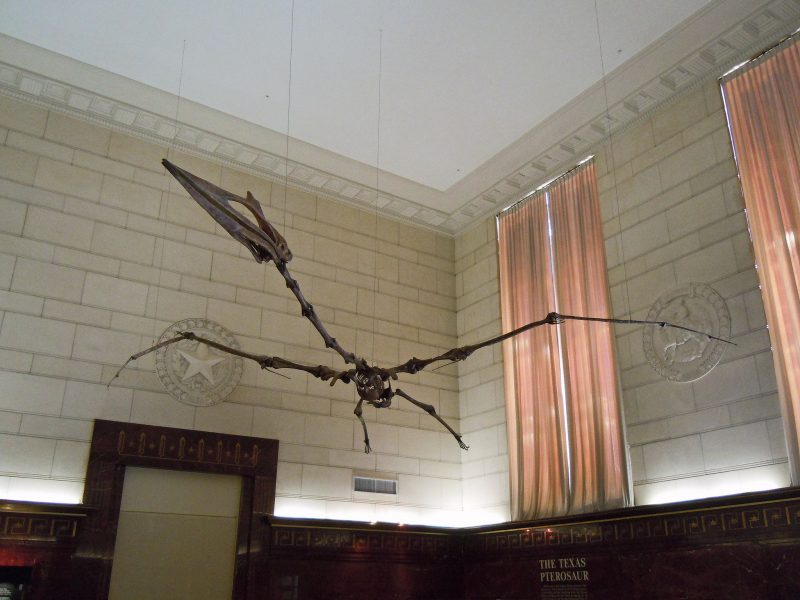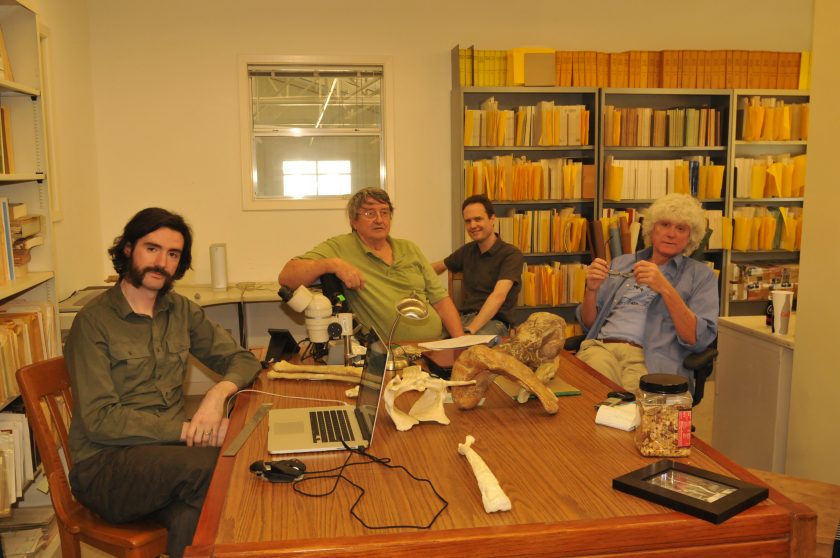Getting to Know the Texas Pterosaur
November 20, 2017

The 35-foot wingspan of Quetzalcoatlus — the largest known flying animal to ever exist — has made it the subject of documentaries and museum exhibits. However, very little has been published based on data from the actual bones of the pterosaur, which were discovered in Big Bend National Park by UT geology graduate student Douglas Lawson in 1971.
A group of researchers plans to change that by publishing a
monograph giving a comprehensive overview of the ancient reptile’s
anatomy and physiology. The group consists of Brian Andres, a
paleontologist and UT geosciences alumnus (B.S. 2000); John Conway, an artist specializing in prehistoric animals; James Cunningham, a civil engineer; Tom Lehman, a paleontologist and professor at Texas Tech University; and Kevin Padian, a paleontologist and professor of integrative biology at the University of California, Berkeley.
Each researcher got to know the pterosaur through a connection with
the late Wann Langston, a professor at the UT Department of Geological Sciences. The group sees the monograph as completing work that Langston wasn’t able to finish before his death in 2013.
“Everybody knows about [Quetzalcoatlus] but very few people have
actually seen it, and we’re the only ones except Wann who have worked on it,” Padian said.
Cunningham added: “Essentially we’re all here because at one point or another, Wann invited us in.”
Since Langston’s death, the group has been making yearly visits to the pterosaur remains — 316 bones from multiple individuals — stored at
the Jackson School Museum of Earth History. They said that they will
finish the monograph in 2017 and submit it for publication.
If accepted, they expect the manuscript to be published early in 2018.
In the meantime, you can see a reconstruction of the pterosaur at the
Texas Memorial Museum on the UT Austin campus.

